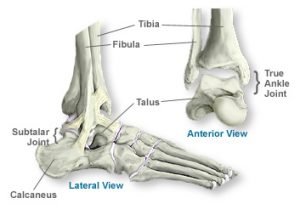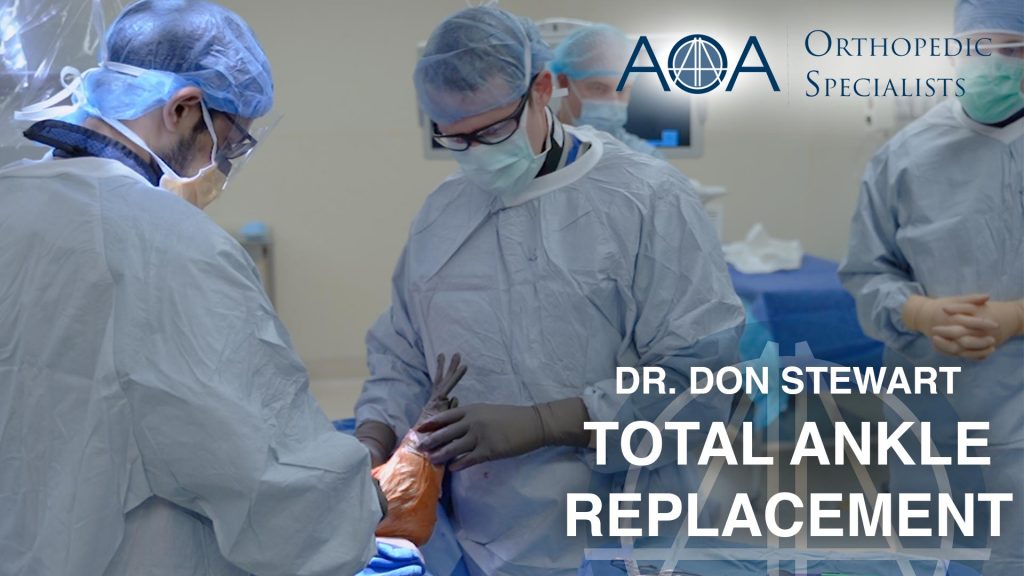Ankle Replacement
 During ankle arthroplasty, or ankle replacement, a foot and ankle surgeon replaces the damaged ankle joint with an implant. Where the tibia rests on the top of the talus lays the ankle joint, or tibiotalar joint. Just like every other joint in the human body, arthritis can affect the ankle joint resulting in the need to replace it. Although not as common as total hip or knee joint replacement, advances in implant design have made ankle replacement a feasible option for many people.
During ankle arthroplasty, or ankle replacement, a foot and ankle surgeon replaces the damaged ankle joint with an implant. Where the tibia rests on the top of the talus lays the ankle joint, or tibiotalar joint. Just like every other joint in the human body, arthritis can affect the ankle joint resulting in the need to replace it. Although not as common as total hip or knee joint replacement, advances in implant design have made ankle replacement a feasible option for many people.
In addition to providing pain relief from arthritis, ankle replacements offer patients better mobility and movement compared to fusion. Ankle replacement surgery allows for better motion at the formerly arthritic joint and less stress transferred to the adjacent joints. Less stress results in reduced occurrence of adjacent joint arthritis.
Candidates for Ankle Replacement
Candidates for ankle replacement surgery may experience severe pain, inflammation, and/or limited motion of the ankle joint. These symptoms lead to pain and difficulty walking and completing everyday activities. The root causes of these symptoms include:
- Osteoarthritis
- Rheumatoid Arthritis
- Arthritis
Due to the nature of the injury and the wear and tear that the ankle joint undergoes on a daily basis, the surgeon may have to perform a revision surgery in 10-15 years.
How doctors perform an ankle replacement
A foot and ankle specialist should always perform a difficult surgery like an ankle replacement surgery. Surgical method and exact procedure differs surgeon to surgeon based on training and preferences. An anesthesiologist places the patient under general anesthesia and the patient cannot feel anything. After cleaning the area with an antibacterial solution, the surgeon makes an incision through the ankle and potentially an additional incision through the foot. After removing the damaged and arthritic portions of the ankle joint, the surgeon attaches the new metal joint implants. The surgeon may also include a special type of plastic placed between the two metal prosthetics for optimal joint movement. The surgeon closes the incision and concludes the procedure.
Recovering from ankle replacement surgery
The patient must wear a splint for a few weeks following ankle replacement surgery. The treating physician may require the patient to use crutches for several weeks. Once the doctor removes the splint, a brace or cast may take its place for several more weeks. Once the doctor removes the cast, the patient must participate in a physical therapy program to regain strength and range of motion.
Click here for a list of the insurance plans accepted by AOA Orthopedic Specialists.
Persistent ankle pain? Call 817-375-5200 or click here to schedule an appointment with a foot and ankle specialist today!
Click Here to watch a video of this surgery.
(Warning: video contains real surgery footage, viewer discretion advised)


